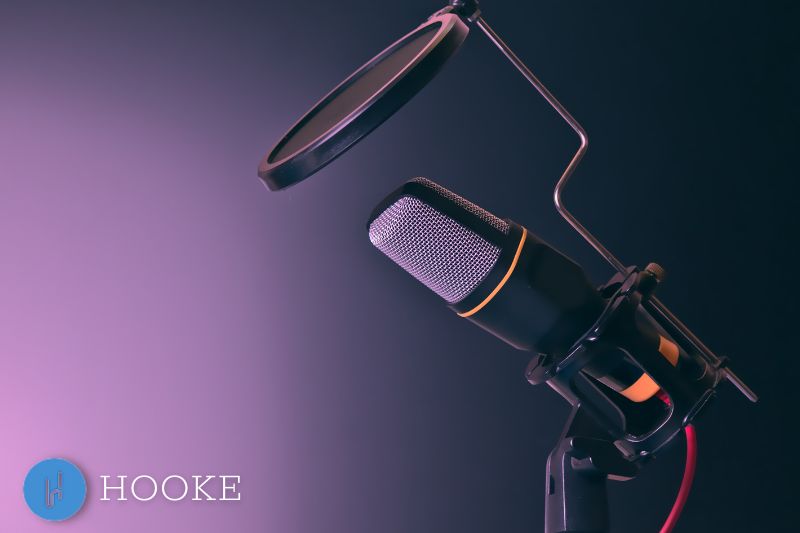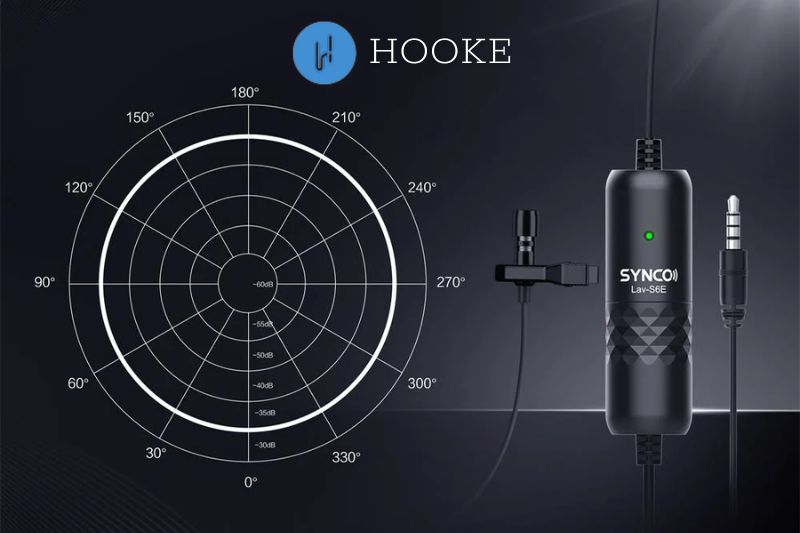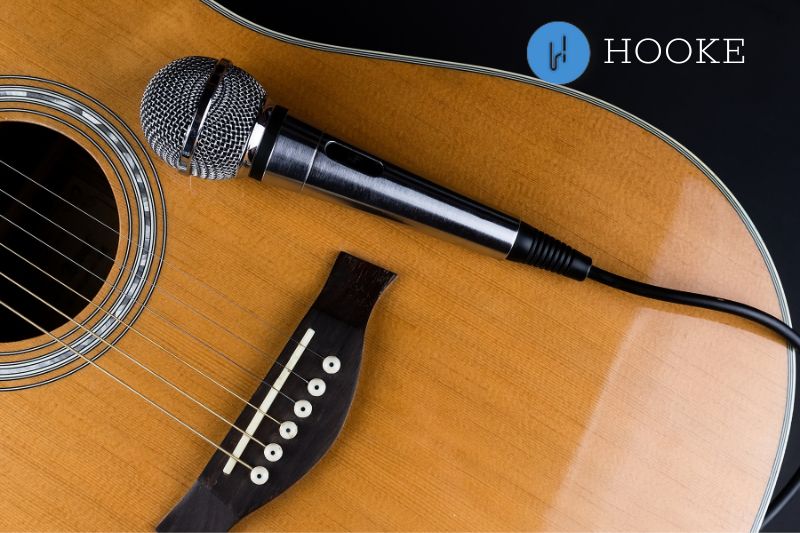- Anthony
An omnidirectional microphone picks up sound from all directions, as the name suggests. A unidirectional microphone is designed to pick up sound in front of it and reject sounds from other directions. This helps make recordings clearer and more focused on what’s happening in one direction.
In this blog post, we will discuss how these two types of microphones: Unidirectional Microphone Vs Omnidirectional Microphone, and compare them with each other and when they should be used in recording situations.
Contents
- 1 What are omnidirectional and unidirectional microphones?
- 2 What’s the Difference Between Unidirectional and Omnidirectional Microphones?
- 3 When should they be used?
- 4 FAQs
- 4.1 Can unidirectional microphones pick up sound from all directions?
- 4.2 What is the difference between cardioid and supercardioid microphones?
- 4.3 Are omnidirectional microphones better for capturing ambient sound?
- 4.4 Are unidirectional microphones more expensive than omnidirectional microphones?
- 4.5 Can I use an omnidirectional microphone for public speaking?
- 5 Conclusion
What are omnidirectional and unidirectional microphones?
Omnidirectional microphone

Omnidirectional microphones gather up sound from all directions, so you can hear everything with equal gain.
Omnidirectional mics pick up sound equally from all directions. This makes them great for public speaking, conferences, classes, meetings, etc., where multiple voices or instruments need to be taped at once.
For example, say you’re live streaming a meeting in a big hall. If you want to record the speech but also receive sounds like laughter, applause, etc., an Omni mic will be helpful when editing.
The best microphone for this would be an omnidirectional microphone. Omnidirectional microphones can pick up the voice clearly along with other ambient noises room, e.g., shuffling papers (clipping of nails), typing sounds on the keyboard, shuffling feet of the audience (footsteps), etc.
Unidirectional microphone

Unidirectional mics are also called directional mics because they only pick up sound from one direction. They don’t have to be at a certain angle from the sound source, but they do have to point straight at it.
The unidirectional mic’s polar pattern should only record sounds coming from the sound source. This way, other sounds coming from other directions won’t be picked up while recording voice or instrument tracks. The sounds will pick up from one direction only; the pickup pattern range is greater than that of Omni-directional microphones.
The best way to pick up a directional sound when recording music or vocal tracks is to position the Omni microphone directly in front of the instrument or voice source (e.g., bass guitar/vocals) but not pointing towards it.
Use a directional microphone to reduce wind and other noise when tracking vocals or instruments. This includes feedback from other sources, speakers’ low-frequency rumble, and traffic.
When recording vocals or instruments, the distance between the microphone and the sound source also matters. Moving away from the source will make the proximity effect more noticeable. The microphone should be as close as possible to the sound source, like a guitar or voice.
What’s the Difference Between Unidirectional and Omnidirectional Microphones?

Leakage
One of the main differences between these two is that they isolate sounds (in the case of unidirectional) differently. While using an omnidirectional mic, external sounds such as voices from outside or even traffic noise would affect your recording.
However, a unidirectional microphone will eliminate these noises and focus on your voice!
Channel Separation
The second thing that comes to mind when comparing these two types of microphones is channel isolation. Here’s a short explanation of channel separation for those who want to know.
As the name suggests, channel separation talks about sound being separated into different channels in the recording process.
Low-frequency response
The third difference between these two microphones is the lower frequencies response. Compared to the linear mic, the omnidirectional mic has a slow frequency response.
Omnidirectional microphones and unidirectional microphones can be seen in kick drums or bass guitars, as both tend to have very low frequencies and need larger mics to produce good results.
Proximity effect
The proximity effect, or microphone distance, is the last element to consider when comparing these two.
So what happens here? In normal recording cases, we stand at a certain distance from our instruments while singing, but if we sing while standing.
Distortion
While comparing these two kinds of microphones, the last thing that comes to mind is distortion. As per our observations, this term talks about how much sound will be distorted while passing through the microphone.
If you want to use omnidirectional mics at close distances, here are some things to keep in mind!
Directionality
Unidirectional microphones capture sound from a specific direction while minimizing noise from other directions. There are several unidirectional microphones, including cardioid, supercardioid, and hypercardioid.
These microphones isolate sound from a single source, such as a stage vocalist or conference speaker.
In contrast, omnidirectional micrs capture audio equally from all directions. These mics are great for recording ambient sound or numerous sources at once, such a group discussion or nature recording.
Noise Cancellation
Because unidirectional microphones are designed to pick up sound from a specific direction, they naturally filter out background noise from other directions.
This is especially true of supercardioid and hypercardioid microphones, which have a narrower pickup pattern than cardioid mics.
In contrast, omnidirectional microphones pick up surround sound, making them less effective at noise cancellation.
Use cases
Unidirectional microphones are ideal for isolating sound and reducing background noise. They are commonly used in live music performances, public speaking events, and recording studios.
Omnidirectional microphones are ideal for capturing ambient or multiple-source sound. They are commonly used in nature recordings, field recordings, and broadcast journalism.
Video:
When should they be used?
Today we will explain why unidirectional microphones vs. omnidirectional microphones are better for a particular situation and when the other one should be used.
Everything comes down to what do you want your mic to record a specific sound or a whole scene.
Unidirectional microphone

The unidirectional microphone is also called a directional microphone because it only picks up wind noise from one direction. Since it is so sensitive, it won’t pick up wind noise from behind the mic unless it is very loud.
If you need a unidirectional microphone, for example, to present an event, this is a great choice. Your audience will hear everything that is recorded, but other people won’t hear anything. One-way microphones have very low noise levels, so they are great for webcasting or video chatting.
Also, it is useful if you need to record some important information from a person who cannot close up the mic because these types of unidirectional microphones don’t require much space between him and the mic to capture his voice with good quality.
This type of microphone is also perfect when large groups discuss something. It would help if you only recorded it because unidirectional microphones do a great job in such a situation.
Omnidirectional Microphone
As I said before, all-around microphones capture sounds from all directions; Omnidirectional microphones are designed to record the whole scene; any noise in the surrounding directional mics will record it too.
So directional microphones should be used for situations where you don’t want to capture unwanted sounds.
If you want to capture everything in the room, a directional microphone will work well and won’t cost much. Quality omnidirectional mics are more expensive.
In some cases, a directional microphone wouldn’t be right because it would only pick up one loud voice. This type of omnidirectional mic can only be used when everyone in the conversation is quiet or not talking at the same time.
Read more:
- Best Microphone For Youtube Videos
- The Best Microphones for Twitch Streams, Gaming, and Podcasting: Top 1 Shure
- How A Microphone Works
FAQs

Can unidirectional microphones pick up sound from all directions?
No, unidirectional microphones are designed to record sound from a specific direction while minimizing background noise from other directions. However, some variations of one-way microphones have wider pickup patterns.
What is the difference between cardioid and supercardioid microphones?
Both cardioid and supercardioid microphones are unidirectional, but supercardioid microphones have a narrower pickup pattern than cardioid microphones.
This means that they are better at rejecting sound from the sides and rear, making them ideal for isolating sound from a specific source.
Are omnidirectional microphones better for capturing ambient sound?
Yes, omnidirectional microphones are better at capturing ambient sound because they pick up sound from all directions. This makes them ideal for nature recordings, field recordings, and other situations where you want to capture the overall sound of a space.
Are unidirectional microphones more expensive than omnidirectional microphones?
Not necessarily. The price of a microphone relies on many things, such as its design, materials, and features. However, high-end unidirectional microphones can be more expensive than entry-level omnidirectional microphones.
Can I use an omnidirectional microphone for public speaking?
Yes, you can use an omnidirectional microphone for public speaking. However, if you want to isolate your voice from background noise, it may not be the ideal choice. In these cases, a unidirectional microphone may be a better choice.
Conclusion
When comparing unidirectional vs. omnidirectional microphones, there are many factors to consider to decide which is best for your speaker’s needs and budget.
Hooke Audio has highlighted some operational differences you should be aware of when deciding between these two types of microphone set-ups so that you can make an educated buying decision.
If this information helped, or if you have any questions about the difference of types of mics we carry, please comment below.

